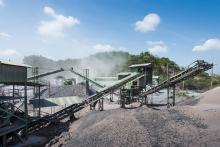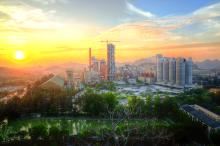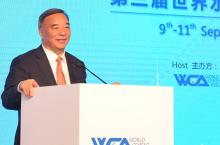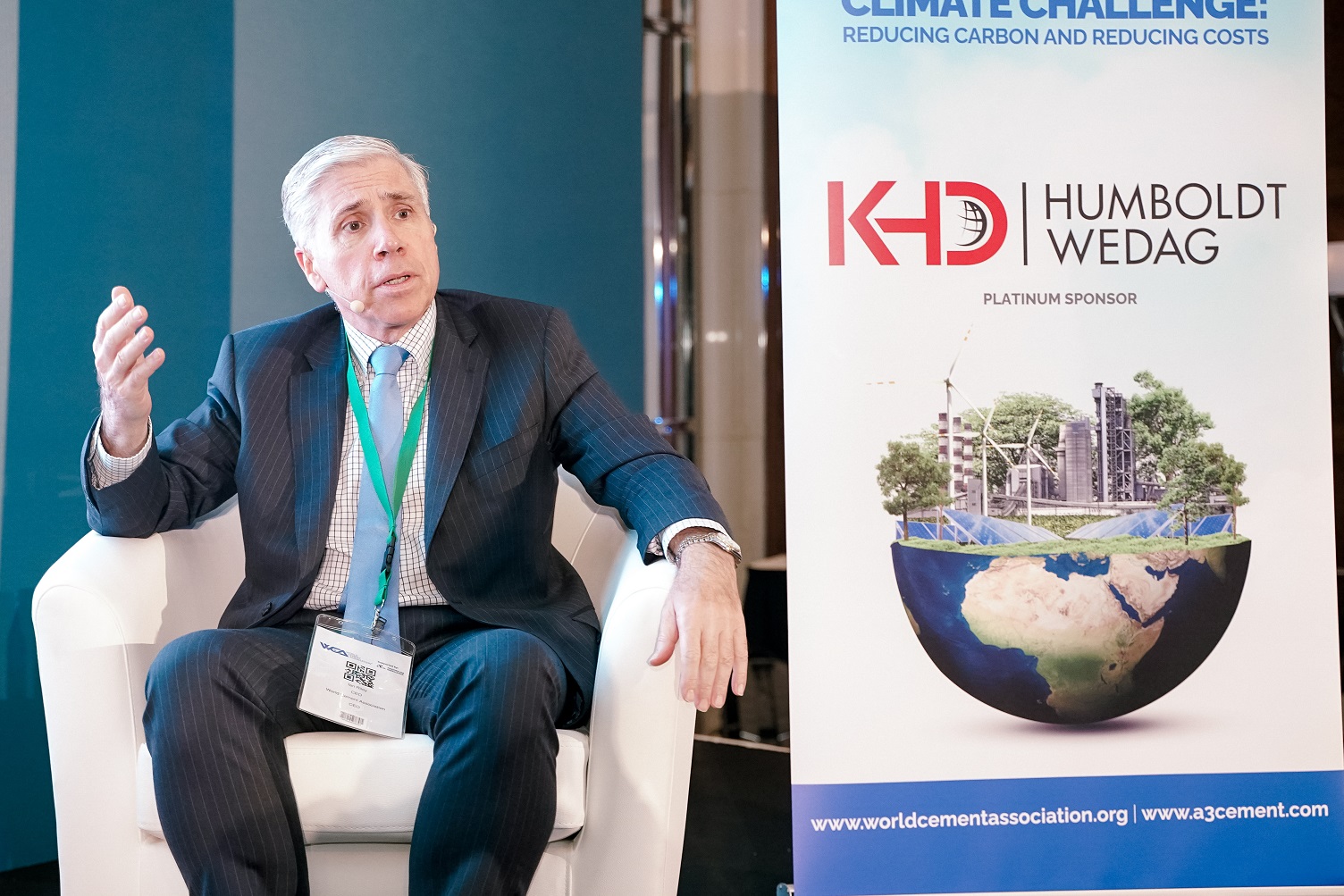
The World Cement Association (WCA) chose Dubai as the location for its Annual Conference in 2022 and again in 2023. CEO Ian Riley says the reason for this is linked with the COP global climate summit being held in the Middle East in both years. COP 27 was held in Egypt in 2022, and COP 28 will take place in the UAE from 30 November to 12 December this year.
“That seemed a good opportunity to talk to the cement industry in the region about decarbonisation and what action the sector can take to address the climate and carbon emissions,” Riley says.
He adds that Dubai is also quite a convenient location in terms of the distribution of the WCA membership, with around 90% of its cement-manufacturing members being based in Asia and Africa. This contrasts with the WCA’s associate corporate members connected to the cement industry, with most of the ClimateTech company members located in North America and a few in Europe.
In terms of how the WCA membership has progressed since the lockdown days of 2021, Riley says: “It’s always easier to meet new people now that COVID is passed, and we can have conferences and so forth in real life. We had a very successful conference in Dubai [in 2022] and a lot of comments on the usefulness of the discussions and how we engaged the participants, and that is very much what we plan to do again this year.
“We have continued to add members through the COVID pandemic, and particularly after that.”
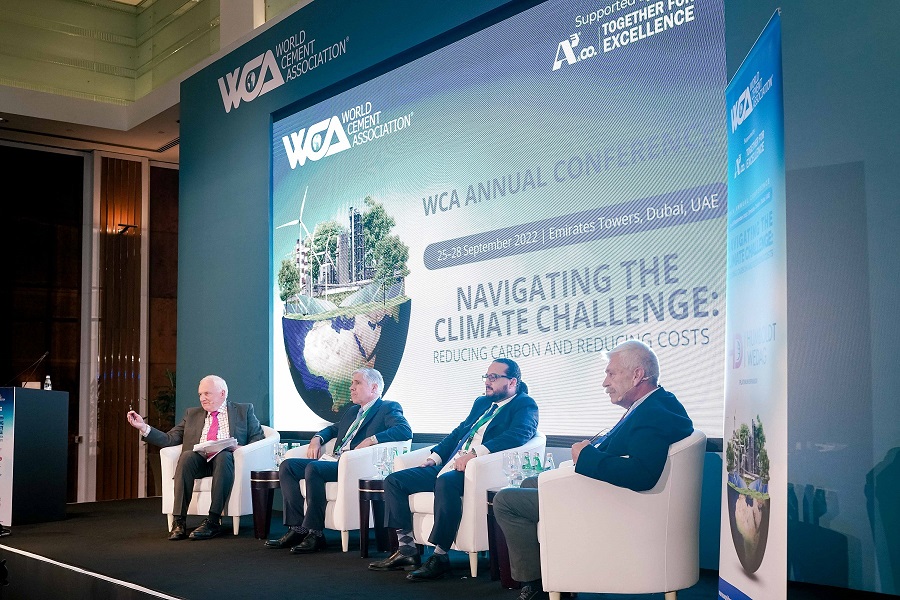
This year’s WCA conference theme is ‘Improving Profitability in a Time of Multiple Global Crises’, and Riley says that price pressures and profit levels are currently the major issues facing producers around the world.
Some countries, such as the UK and US, have seen substantial increases in cement prices which has boosted cement companies operating in those markets. However, in much of the rest of the world there is substantial over-capacity, and one of the biggest changes is in the profitability of the Chinese cement industry over the last year.
“Between 2017 and 2022, China had excellent profitability due to the restrictions on supply that came from implementing the government’s environmental policies,” says Riley.
In 2016 the Chinese government introduced rules stating that when air quality was poor in certain industries – including cement – they were required to shut down. As a result of this, cement kilns typically had to shut down for around 100 days of the year, dependent on some environmental factors, in particular around nitrogen oxide (NOx) emissions. In addition, if a cement plant was burning municipal waste, it would be more likely to be kept open. The combination of these factors meant that up to 15% of Chinese cement capacity was taken off the market.
“That brought the supply and demand into a pretty decent balance, and maybe even a shortage in the high season,” Riley adds. “Consequently, the price of cement in China was pretty healthy for about five years.”
The Chinese market started a slowdown in the second quarter of 2022. Chinese cement companies generally struggled with profitability last year, and in the first half of this year many of them were losing money.
Riley says that a similar situation to China of over-supply exists in most countries around the world. In some of those countries the producers have maintained a reasonably stable situation, but in many others over-supply has periodically led to price pressures.
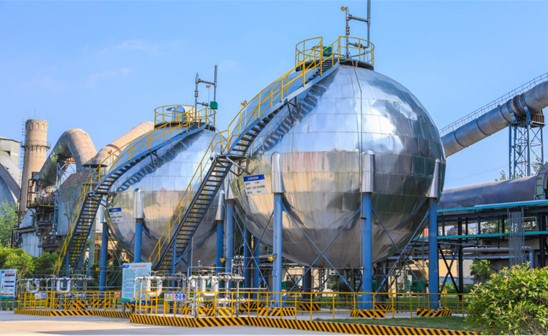
Another major issue that the cement sector is currently facing is the rise in energy prices over the last year, with coal prices increasing around threefold. This has had a huge impact on cement producers as energy is by far the largest single cost in cement production.
Supply chain issues are also impacting the industry. “Supply chains have not functioned as smoothly as in the past and there have been shortages that weren’t anticipated, with some places struggling to get key supplies such as bags,” says Riley.
Innovations in digital technologies and opportunities to reduce clinker factor are showing particular promise in terms of helping tackle some of the climate and sustainability issues.
“One of the big attractions with digital technologies is that they are relatively inexpensive and quick to apply,” says Riley. “If you decide that you want to use AI to optimise your combustion process, within a pretty short space of time you can be operating a system and gaining the benefits.”
Artificial intelligence (AI) technology is being deployed in a number of different ways in the cement sector, with one being in process control. “One of the approaches is in trying to duplicate your best production days, so that all of your days are like these,” says Riley. “This involves trying to understand the different factors that made the better days better and the worse days worse.”
He adds that companies have produced some interesting results using these kinds of approaches, including reducing fuel consumption and improving quality consistency. “If you have better quality consistency it allows you to reduce the clinker factor because, with more reliable quality clinker, you don’t need to have the same buffer to make sure you are above the required standards,” explains Riley.
Another way AI is being used in the cement industry is with prescriptive maintenance, using the different patterns that are picked up from the many sensors present in a cement plant such as for temperature, voltage, current and vibration.
“Initially when these sensors are set up you normally have a control limit with a minimum and a maximum, but by the time it gets to that point it’s usually too late,” Riley says. “What the AI systems are trying to do is pick up patterns that communicate a problem, long before you get to an out-of-control situation.”
Some companies have been able to use AI systems to anticipate maintenance problems or identify something that is wrong or that they wouldn’t normally have been able to pick up. As the system becomes more experienced, then it can pick up more and also give a better indication of what the possible causes might be.
Referring to AI might make some people think of ChatGPT-type chatbots, but Riley says this is not really how the cement sector is utilising the technology. “Effectively it’s in using the capabilities of algorithms to pick up patterns and relate that to other things. Improving maintenance and process control are gradually being rolled out and more and more companies that I talk to are using AI. I guess we will get to a stage where everybody is using it. It’s not particularly expensive to install and it’s clear that it brings some pretty worthwhile improvements,” Riley highlights.
In terms of regulations covering the cement sector, Riley says the most significant development is the latest European standards for low-clinker limestone calcined clay cement (LC3), that were introduced in 2022.

Looking at the broader issue of how decarbonisation will be achieved in cement, construction and other industries, he adds: “As this becomes more important, the measurement of reductions in carbon footprint and the way that carbon offsets are done will become more important.
“This whole area is still fairly immature in its development. For example, if you look at the market for carbon offsets, you see a huge variation in price for a tonne of offsets from a dollar up to around a thousand dollars-plus.”
Riley says that there is also a large variation in quality, with some offsets not being permanent and it being difficult to establish whether they are additional or something that would have happened anyway. This has led to a number of scandals around double-selling.
“I think in the carbon markets in particular we will see a lot of changes and a lot of tightening up of standards, protocols and auditing, trying to make sure that we have a real grip on what’s going on,” Riley adds.
Riley explains that there have been significant developments in the reporting of Scope 3 CO2 emissions. Scope 3 emissions relate to the extraction and production of purchased materials and fuels, transport-related activities that are not owned by the cement producer and outsourced activities.
Despite it not being compulsory, an increasing number of large companies are reporting Scope 3 emissions and have included these in their decarbonisation commitments.
“It’s a real challenge to measure your carbon footprint when Scope 3 is included because you’re really measuring somebody else’s activities and emissions,” he adds. “If you have an extended supply chain that’s a lot of people that you don’t directly control.”
The construction industry has seen the use of EPDs – environmental product declarations – to quantify the carbon footprint of a product over its lifetime. Riley says that EPDs tend to have a lot of ‘wiggle room’ in the way they are produced, but as time progresses there will be more rigour in how they are calculated.
Cement and concrete production are highly energy-intensive, and in 2018 the UK-based policy institute Chatham House estimated that the cement industry was responsible for 8% of global CO2 emissions.
Riley says the cement industry continues to work on reducing its CO2 emissions, and the latest estimates indicate that these have been cut by 2-3% in the last couple of years.
“There is a little progress but it isn’t at the speed that it needs to be in order for us to reach the targets that have been set globally, and indeed that particular companies have set,” he adds.
He says that over 30 carbon-capture projects have been announced at manufacturers around the world, and more than 100 cement plants are looking at such initiatives. These types of projects take at least six years to design and build before they come online and are commissioned. Riley predicts that carbon-capture and storage projects will only start to make any impact at the end of the current decade.
The use of carbon-capture utilisation and storage (CCUS) technology has been accelerating in the cement industry over the last two years.
Riley says there has been more consideration in the industry of the most effective ways of capturing the carbon: “With a cement plant you can either have an ‘end of pipe’ solution where you have got your emissions and you deal with those, or you can look at the pre-calciner stage. The advantage of the pre-calciner stage is that you can get a much more concentrated stream of CO2, either through oxy-fuel combustion or indirect heating. About 80% of the CO2 emission comes from the pre-calciner.
“Different approaches are being taken but I think oxy-fuel is currently considered to be the most attractive.”
Riley explains that, while cost is still a restraining factor with CCUS projects, it should be possible to reduce this down to less than €100 per tonne of CO2 captured with the scaling up of such initiatives.
“There are some economies you can make if you are designing a cement plant from scratch rather than retro-fitting,” he adds.
“The interest in Europe is to install the carbon capture now because everybody expects the carbon price to continue to increase as the carbon budget is reduced. Therefore, if you are at a level now where that more or less pays for the carbon-capture project then you’d expect over the next 10 or 20 years that you would come out well ahead by capturing and storing rather than paying for the emissions.”
Riley says that the main impact in decarbonisation efforts over the last couple of years has been more with traditional levers such as fuel switching, using more biogenic fuels (fuels which are produced from combusting organic matter), progress on fuel efficiency, and reducing the overall clinker factor. Low-carbon LC3 cement plays a role in the reduction of clinker and this is expected to become even more prominent going forward.
“Almost all of the large cement producers have now announced LC3 projects,” says Riley. “We still don’t have much production today, but within a couple of years we should see a significant increase in the use of LC3 cement.”
Nearly all of the current carbon-capture cement projects are in Europe, with some in North America.
China is conducting the majority of energy-efficiency projects, and the country’s government set new standards for energy efficiency in 2022, with companies being given until 2025 to meet these. Riley says that only a third of plants were compliant with the standards when they were announced, leaving the remaining two thirds needing to make improvements to keep operating.
China’s approach is not being followed elsewhere. “You don’t see the same efforts on energy efficiency in Europe and North America, even though there are plants in those regions which have much worse energy efficiencies than the modern plants,” Riley adds. “The amount of capital that they have to invest just doesn’t justify putting in the money.”
He says that the emphasis in Europe in particular has been on alternative fuels to reduce the carbon that is caught under the EU’s Emissions Trading System (ETS) that sets a cap on greenhouse gas emissions by sectors including cement.
In North America the situation regarding emissions has been transformed with the 2022 Inflation Reduction Act climate legislation, which has introduced tax incentives to cut CO2 emissions. Riley says this is leading to the US catching up with Europe on the issue.
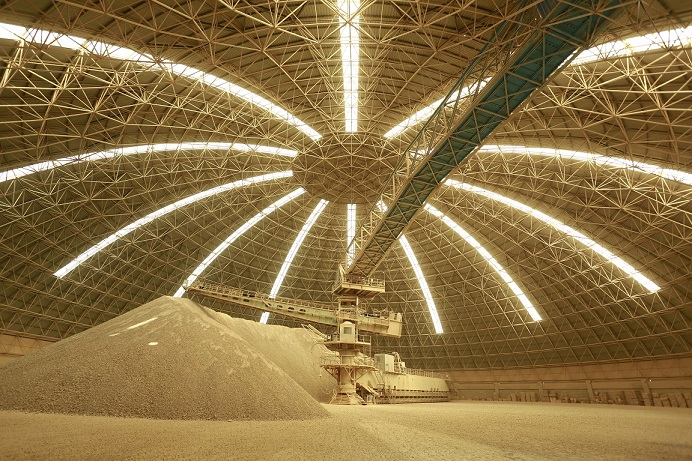
In terms of how the major global cement producers – including Cemex, Heidelberg Materials and Holcim – are progressing on their pathways to become net-zero across their operations by 2050, Riley says they would all claim to be on-track.
“There is a lot of activity in carbon capture and storage among the big players,” he says. “Heidelberg Materials in particular have really pioneered that with the Norcem CCS project in Brevik, Norway. Heidelberg has recently announced a number of other CCS projects including one in Sweden.”
Both Cemex and Holcim are also working on carbon capture and other carbon-reduction technologies centred around electrification and fuel substitution.
“Almost all of the large cement producers have now announced LC3 projects,” Ian Riley says. “We still don’t have much production today, but within a couple of years we should see a significant increase in the use of LC3 cement.”
“For the large producers with LC3, one of their first considerations was in securing the raw materials before moving into production, because you risk the whole thing becoming too expensive if you have to pay too much for the raw materials,” says Riley. “With CCS the technology is coming from suppliers such as ThyssenKrupp. The major players in Europe are at the forefront, but not alone in terms of implementing carbon capture and storage.”
Smaller and mid-sized players are also prominent in decarbonisation efforts, and in fact the first two LC3 cement factories to become operational in the world were the Cementos Argos plant in Colombia in 2020 and the Abidjan, Ivory Coast facility operated by Turkish-owned Cimpor.
In China President Xi Jinping has made a commitment for the country to be carbon neutral by 2060. In terms of how the Chinese cement sector is progressing in light of this, Riley says the industry’s focus is still on energy efficiency and it is somewhat unique in the way it is doing this.
“Carbon capture in China is really being pioneered by the energy industry, in particular by the coal-fired power stations,” he says. “The expectation is that the technology will be developed there and then it can be rolled out to other industries.”
He adds that there is strong interest in LC3 technology in China, so there may also be some movement on this.
A number of WCA members are developing ClimateTech solutions for use in the global cement sector. Some relate to the use of supplementary cementitious materials such as LC3.
“With LC3 you are calcining the clay, so there is a carbon footprint associated with the calcination of the clay,” Riley says. “If you could mechanically activate the clay rather than using calcination that would be pretty interesting.”
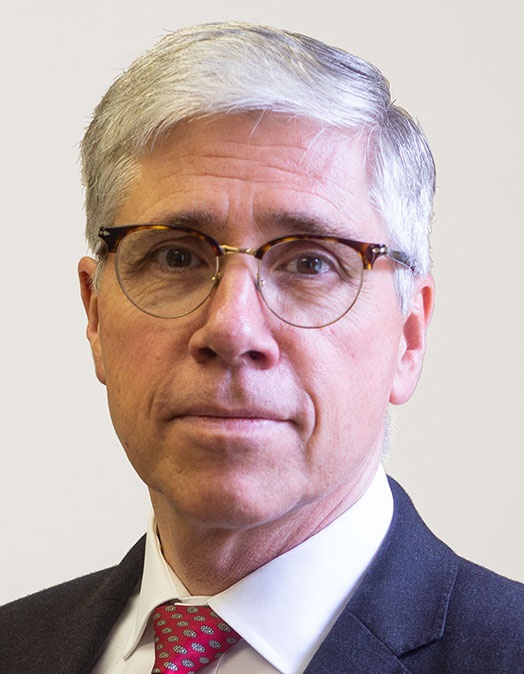
As an example he highlights Canadian WCA member Carbon Upcycling which has developed a process designed to improve the cementitious properties of supplementary materials including clays, fly ash, steel slag and various other materials.
“One of the challenges the industry has looking to 2050 is that the availability of fly ash and blast furnace slag is going to be reduced as we move away from coal-fired power plants and from traditional steel technology,” he says.
In addition to the use of cementitious materials, another area of technology development is in sequestering CO2 in concrete and aggregates. WCA member Blue Planet has developed technology to produce synthetic aggregates from a calcium source such as waste concrete and CO2.
“That is another approach where you effectively have CO2 stored in the aggregate.”
Another WCA member CarbonCure is sequestering CO2 into the concrete mix, enabling a reduction in cement in the concrete mix.
Riley says that the recycling of concrete is an interesting area.
“In the UK, for example, you typically have a mixture of construction waste and excavation waste which gets processed and mixed together,” he adds. “A lot of these recycled aggregates are not finding their way back into concrete but are being used as fills. There is the potential to do things differently where you keep the concrete separate and you have the opportunity to use, not only the aggregates in there, but also the residual cement for the sequestration of CO2 through processes such as those developed by Carbon Upcycling or Blue Planet.”
It is estimated that a third of the aggregates used in the UK are recycled, but Riley says it’s very difficult to find the data on how much of this comes from concrete.
Traditional CO2-reduction levers that the cement industry has been using for many years include fuel efficiency, changing to lower carbon fuels including waste, and reducing the clinker content in cement, and these remain the most important part of reduction activity.
“All of these steps can save costs as well as reducing carbon,” Riley states. “The interesting question is probably why people have not gone further, as there is probably another third that we can reduce from where we are today by using these traditional levers. You might have to invest a bit of CapEx [capital expenditure], but in most cases the cost is not too high.
“At least in some cases I think there is a concern about getting contractors to move from Ordinary Portland Cement (OPC) to blended cement. As an example, in North Africa, virtually all of the cement in Algeria is blended and in Egypt almost all of it is OPC, and in many cases you are talking about the same contractors. It’s not easy to explain why it has been easier to move to blended cements in some places than others.”
A major issue currently facing European cement producers is the phasing out of the free allocation of carbon credits from 2026 under the EU Emissions Trading System (EU-ETS). The Carbon Border Adjustment Mechanism will gradually replace the free allocation system and is intended to level the playing field between EU and non-EU cement producers.
As free allocations are phased out in ETS Phase IV, Riley says that cement producers in Europe will have to buy an increasing number of carbon credits on the market. “If you look at the current pricing of close to €100 per tonne, that is going to add another €80 per tonne to the cost of clinker,” he says. “This is a huge increase in variable costs, and presumably this will be passed on in higher prices.”
Even a dramatic increase in the price of cement will not hugely impact demand for the material as it represents a fairly small proportion of the costs of a building project.
“In Europe cement has typically been around 2% of the cost of a construction project, so cement costs going up is not going to make a big difference on demand,” Riley adds.

